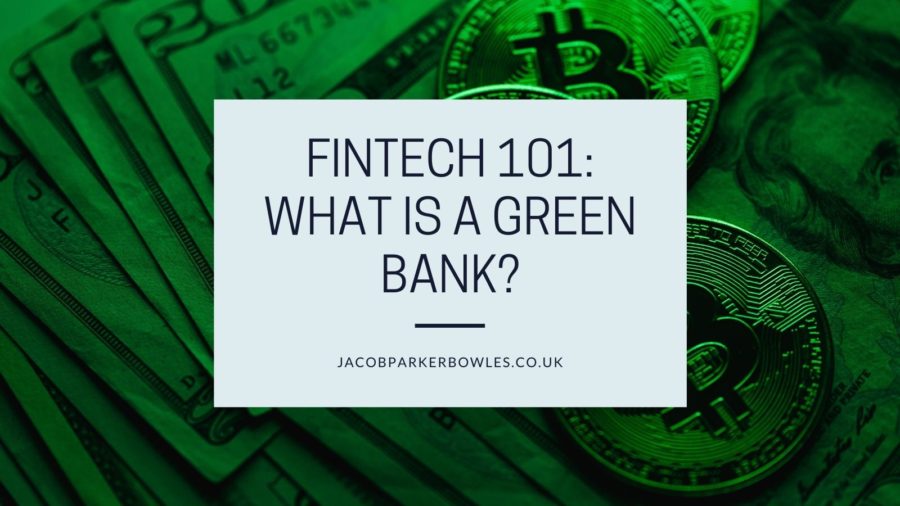Has the current COVID-19 pandemic reduced enthusiasm and confidence in the once touted ‘currency of the future’, cryptocurrency?
If recent prices are a reflection of confidence, then the answer would be a resounding, “No!”
Despite the 50 percent crash that cryptocurrency markets faced during panic-selling caused by the coronavirus pandemic and its future effects on the world-economy, Bitcoin immediately bounced back within 24 hours and saw a 20-percent increase in its share prices.
When traditional markets are currently nothing but doom and gloom because of the upcoming economic fallout that many are expecting, why is cryptocurrency still seen as a potentially good place to allocate capital?
The answer to that question is increasing blockchain technologies and the widening of regulatory measures in many countries towards its usage and trading.
Blockchain Technologies
First off, what is blockchain technology?
A blockchain is a decentralized ledger that tracks and processes transactions without the need for central clearing authority.
In other words, blockchain technology allows transactions to happen between two parties safely, quickly, cheaply, and easily because there is no third-party involvement.
Due to blockchain technology, the usage of cryptocurrency has been made possible in everyday life.
In fact, it has made everyday transactions safer and easier.
These benefits do not just apply to consumers either, for many businesses have seen their revenues go up due to blockchain technology and its ability to process cryptocurrency transactions safely and easily across the globe.
Specifically, blockchain technology allows businesses the ability to offer more payment options at lower transaction fees with fewer chargebacks.
Further explanation in regards to these benefits and others are given below:
Purchase Versatility
Businesses who offer more payment options make it easier and more comfortable for their customers to purchase their goods and services.
Simply stated, offering multiple payment options, specifically multiple cryptocurrency options, encourages more transactions.
The number of daily transactions for Ethereum in the 4th quarter of last year (2019) was around 648.25. During the same period, Bitcoin averaged 309.87 transactions per day.
Cryptocurrency transactions are especially beneficial for businesses that run eCommerce stores and attract an international audience who prefer to pay in digital currencies.
Minimal Chargebacks
Blockchain technology makes it very difficult, near impossible, for anyone to create a fraudulent chargeback while using cryptocurrency to pay for an item.
By using blockchain technology for cryptocurrency transactions, businesses can avoid chargeback fraud and thus save money, time, and resources.
Low Transaction Fees
Blockchain technology streamlines cryptocurrency transactions by making the ‘middleman’ – financial institution or bank – irrelevant.
Peer-to-peer exchange of digital currency for goods or services reduces transaction costs as there is no need to pay any additional fee for institutions to oversee and guarantee the transaction goes through.
Quick and Safe Transactions
When businesses use banks and other financial institutions to track, monitor, and process their transactions, they usually have to wait a couple of hours or days to get their money.
However, cryptocurrency transactions occur instantly, so the business receives their payments immediately.
The quicker a business gets paid, the quicker they can deploy capital to purchase more inventory and make more money.
What is more, blockchain technology has made cryptocurrency transactions safer than traditional fiat currency transactions because each coin and coin wallet is tracked, monitored, and processed all at one go.
Worldwide Regulation
One of the main attractions of cryptocurrency has always centered around the fact that governments can not lay claim to it. However, the decentralized nature of digital currency has also made it an extremely volatile investment.
At least, that is how it has been in the past.
Trading cryptocurrency has, for the most part, been a rather safe endeavor because each transaction utilizes blockchain technology, which, like digital currency transactions, supplies various safety measures to reduce the risk of fraudulent activity.
However, as it is the newest ‘market on the block’, many issues have been raised as to its safety because, after all, there are no governments and regulatory agencies to monitor it and take necessary and appropriate action should something go wrong.
In this respect, many governments around the globe have already considered taking action, albeit not always the same action, towards closer cryptocurrency and crypto-market regulation.
One of the hopes of such regulatory efforts is to entice bigger players and large institutions to use a good portion of their capital in crypto-asset allocation.
The main safety precaution that cryptocurrency regulation can bring to the market is the detection and eradication of outside manipulation.
In 2020, the efforts to regulate cryptocurrency markets have not dwindled. Some of the main areas being focused on by Western countries (i.e., those residing in the EU, along with the U.S.) are as follows:
Crypto-Asset Classification
The EU is looking to define more clearly what exactly constitutes a crypto-asset.
Unlegislated Crypto-Assets
The EU is considering legislating certain services and actions pertaining to the buying and selling of crypto-assets.
The EU feels that regulating any service or action pertaining to cryptocurrency transactions and trading will unify other crypto-asset regulations and regulatory agencies that may be formed in the future to monitor and enforce them.
The following service providers and crypto-actions are being considered for legislation:
- Trading Platforms
- Exchanges
- Crypto-Asset Issues
- Custodial Wallet Providers/Services
Currently, these providers and actions remain unlegislated and outside the control of the EU.
US Crypto-Currency Act 2020-2022
The goal of the new cryptocurrency legislation in the U.S. is to create a clear framework of operations for the cryptocurrency market and limit crypto-investing fraud and other negative drawbacks associated with crypto-trading.
The act has also split digital assets into three main categories for better classification: cryptocurrencies, crypto-securities, and crypto-commodities.
Cryptocurrencies: derivatives backed by smart contracts or collateralized digital assets.
Crypto-securities: consists of all equity, debts, and derivatives resting on a blockchain.
Crypto-commodities: all digital assets residing on a blockchain.
The above countries’ initiatives to regulating cryptocurrencies may spark a global movement towards defining and regulating the crypto market.
One thing is for sure, crypto-enthusiasts, traders, and governing bodies are expecting to see major trends take place during 2020 due to the advancement of blockchain technology and the widening of cryptocurrency regulations.
5 Cryptocurrency Trends for 2020
It is probably safe to say that some of this year’s trends will be expected while others will seem to come right out of the blue.
In either case, the probability that the following five trends will arise and continue throughout the year and perhaps for the better part of next year are very high.
Trend 1: Halvening Will Increase Value
Halvening refers to an event where Bitcoin’s block subsidy gets cut in half.
As there can be only 21 million bitcoins available at any given time, the halvening event, which usually occurs every four years, is necessary to help keep cryptocurrency demand and supply in balance.
It is expected that such an event will happen sometime during this year, increasing supply growth and making Bitcoin more expensive to trade.
Trend 2: Industry-Stalwart Backed Crypto-Launches
While regulation attempts in the past few years scared off many big brands from launching digital currency, this year, new players are expected to enter the crypto market with their version of crypto-coin.
Facebook is expected to launch its Libra coin sometime this year, while JPMorgan will most likely launch its JPM by the end of 2020.
These new launches should entice big-name players like Goldman and Sachs to start trading cryptocurrencies and make it a regular part of their overall investment strategy.
Trend 3: More Regulations
As was discussed earlier, 2020 will not be absent from cryptocurrency regulation.
While some might see this as a negative, serious investors are expected to enter into crypto markets due to the potential legalization of cryptocurrency as legal tender and the increased monitoring of its trading.
Countries like the U.S., China, Canada, Singapore, and Australia are expected to come up with more legislation and regulation regarding cryptocurrency consumer transactions and trading.
Trend 4: Blockchain and AI
The combination of AI and blockchain technology in 2020 will undoubtedly make cryptocurrency transactions even more secure.
Experts are predicting that industry leaders are going to make great efforts to insert machine learning and AI into blockchain technology to make it smarter, faster, and safer.
Not only will day-to-day cryptocurrency transactions be benefited by this symbiotic integration, but cryptocurrency trades as well.
Trend 5: Network Upgrades
Bitcoin and other cryptocurrencies run on nodes – computers that run cryptocurrency programs.
These nodes are usually connected to other nodes to form a collective network of cryptocurrencies that can be mined, traded, or exchanged for goods and services.
Now and then, these nodes get upgraded to ensure the privacy and scalability of cryptocurrencies.
This year (2020) should see an upgrade to the Bitcoin node network, which will most likely provide a host of benefits to Bitcoin and other cryptocurrency stakeholders.
5 Possible Profitable Cryptocurrencies for 2020
While 2019 saw a steep devaluation of many cryptocurrencies, the five trends listed in the previous section will likely supply a boost to the overall crypto market.
In particular, the following five cryptocurrencies should see an increase in their value during 2020 due to the above trends and other positive factors relating to their usage and trading:
Bitcoin
Bitcoin will most likely become the cryptocurrency with the largest market cap in 2020, giving it a boost in share price throughout most of the year.
What is more, Bitcoin’s ecosystem is expected to accommodate eCommerce platforms, micropayment processing, and decentralized applications, which should give it more practical value in everyday life.
Ethereum
This cryptocurrency should increase in price this year because of its functionality and blockchain technology.
Unlike Bitcoin, Ethereum is backed by practical smart contracts and therefore holds tangible value.
While other cryptocurrency values rise and fall based on surplus or deficits, Ethereum has real-world value as it is used for a host of projects centered around digital transactions.
NEO
NEO is not a typical cryptocurrency.
This cryptocurrency combines digital and real assets making it more trustworthy than other digital coins.
It will most likely gain in popularity and thus in share price during 2020 because investors seem to like the fact that its tangible asset backings make it easier for them to assign a value to it.
EOS
EOS is like Ethereum but only better.
EOS is free of all the problems associated with Etherum and other blockchains and is scalable to boot.
The EOS system has a host of dynamic features that make it superior to other blockchains, such as an infinite amount of blockchains and a unique algorithm securing proof of ownership.
What entices investors the most about EOS is that it would be the preferred blockchain for companies like Uber, Twitter, and Amazon should they ever decide to use a blockchain for cryptocurrency transactions.
Ripple
Ripple, XRP for short, was the first crypto ecosystem to partner with large financial market players.
Currently, XRP has partnered with Western Union to reduce money transfer costs between parties.
While Ripple is not expected to make huge gains in 2020, it will likely rise. Even if its share price does not go up, it is still a good long-term investment because of its partnerships and real-world applications.
Conclusion
While some people view cryptocurrency as a vehicle for wealth, others see it as the currency of the future due to its convenience and potential practicality.
Whichever the case may be, cryptocurrencies do not look like they are going to fall out of favor anytime soon.
With governments around the globe trying to regulate its usage and trading of cryptocurrencies, along with blockchain technology becoming more advanced and secure, digital currency looks like it is here to stay – 2020 might even be the year where it is recognized as a viable form of legal tender around the world.










